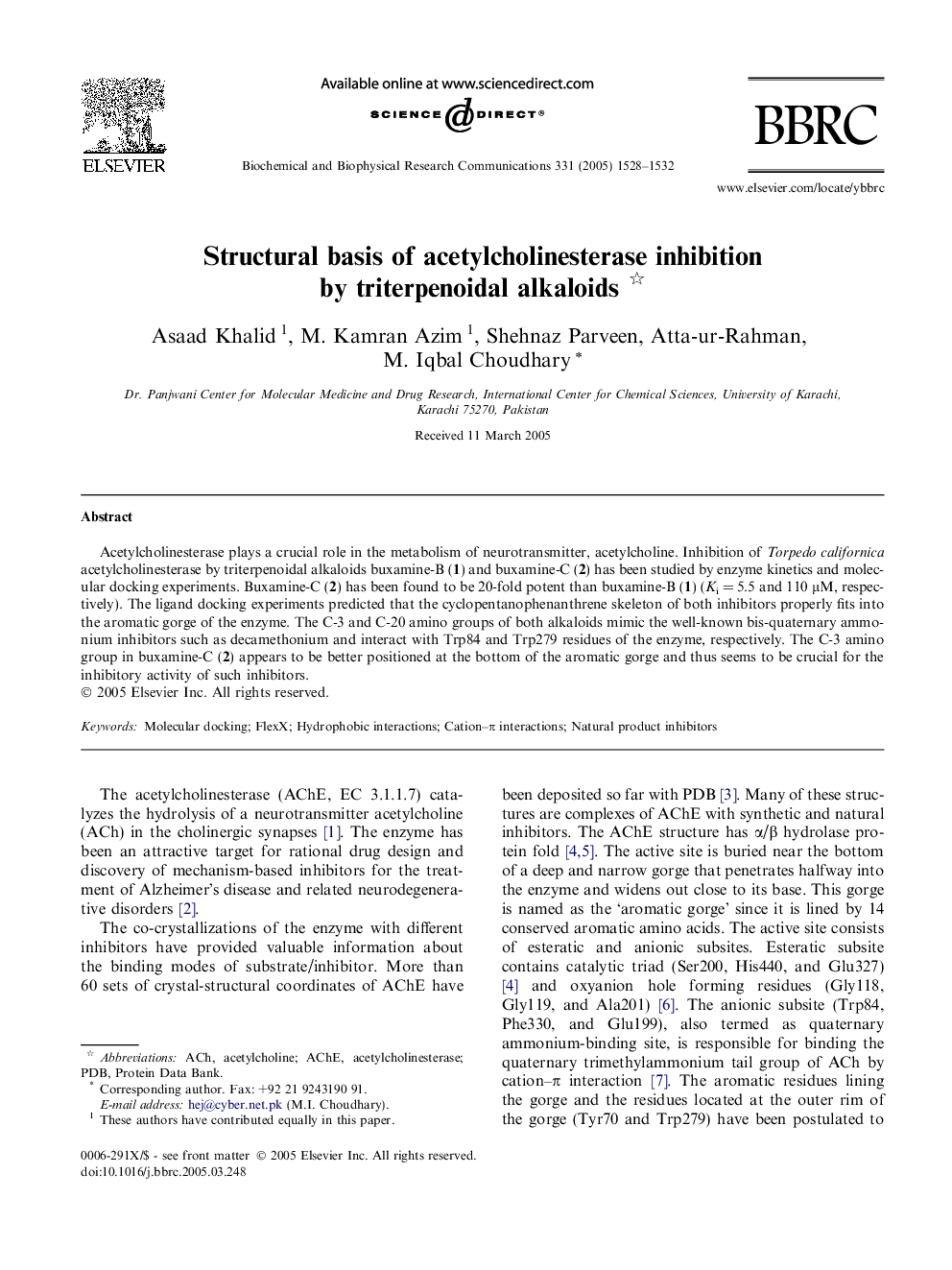| Article ID | Journal | Published Year | Pages | File Type |
|---|---|---|---|---|
| 10770531 | Biochemical and Biophysical Research Communications | 2005 | 5 Pages |
Abstract
Acetylcholinesterase plays a crucial role in the metabolism of neurotransmitter, acetylcholine. Inhibition of Torpedo californica acetylcholinesterase by triterpenoidal alkaloids buxamine-B (1) and buxamine-C (2) has been studied by enzyme kinetics and molecular docking experiments. Buxamine-C (2) has been found to be 20-fold potent than buxamine-B (1) (Ki = 5.5 and 110 μM, respectively). The ligand docking experiments predicted that the cyclopentanophenanthrene skeleton of both inhibitors properly fits into the aromatic gorge of the enzyme. The C-3 and C-20 amino groups of both alkaloids mimic the well-known bis-quaternary ammonium inhibitors such as decamethonium and interact with Trp84 and Trp279 residues of the enzyme, respectively. The C-3 amino group in buxamine-C (2) appears to be better positioned at the bottom of the aromatic gorge and thus seems to be crucial for the inhibitory activity of such inhibitors.
Related Topics
Life Sciences
Biochemistry, Genetics and Molecular Biology
Biochemistry
Authors
Asaad Khalid, M. Kamran Azim, Shehnaz Parveen, Atta-ur-Rahman Atta-ur-Rahman, M. Iqbal Choudhary,
